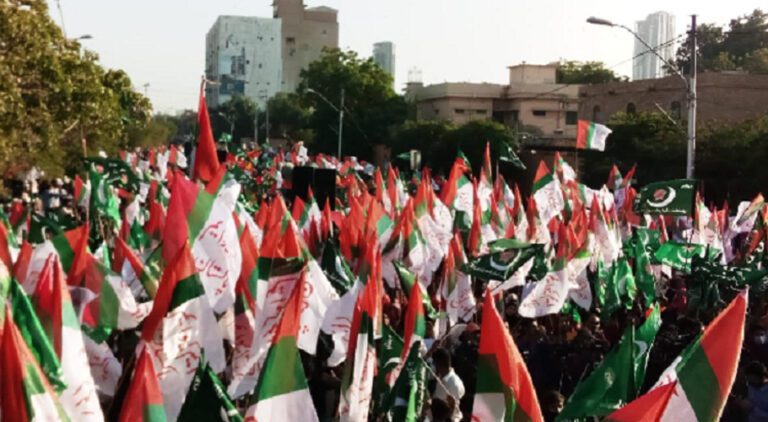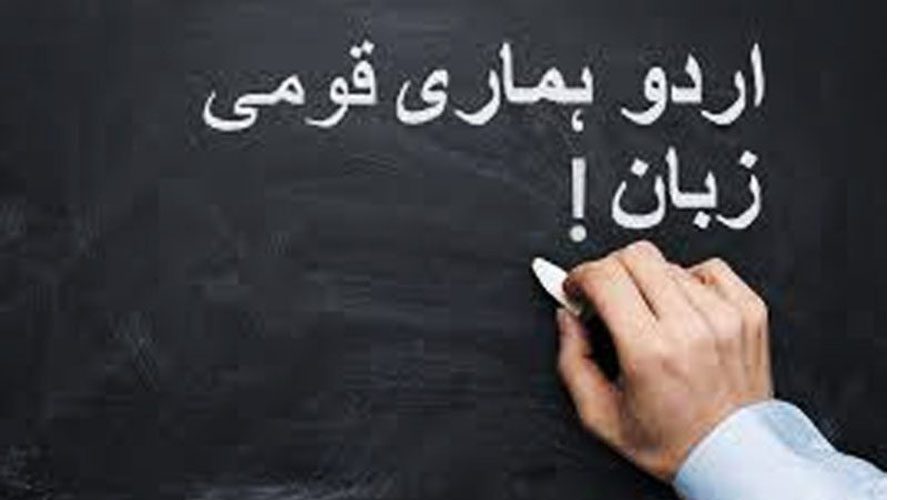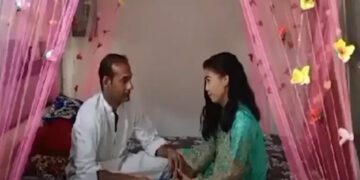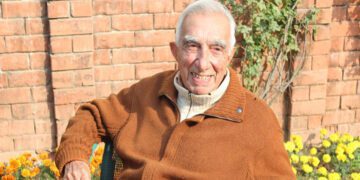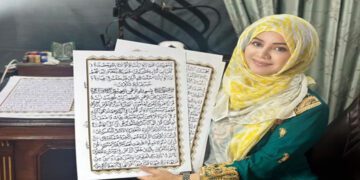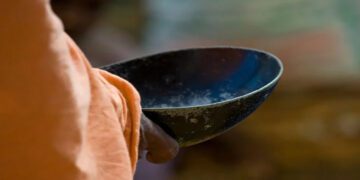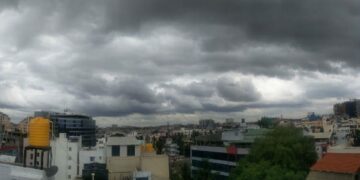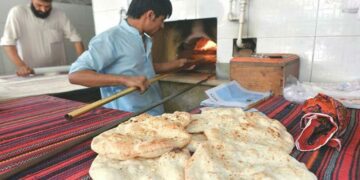![]() Follow Us on Google News
Follow Us on Google News
From social media posts, it was revealed that today is Muhajir Culture Day. As usual, some people were in favor of it while others started opposing it. When I thought of writing a post on it, I thought of writing a blog on it instead of a few sentences.
In my opinion, if the Muhajirs consider and call themselves a separate nation, then they have the right to do so. If they show their separate identity, we should respect them. In my opinion, instead of imposing our opinion on millions, crores of people, they should get the right to determine their own identity, who are we to give them a forced identity?
Who is a migrant?
Now we come to the discussion of the word Muhajir. At the time of the establishment of Pakistan and sometime later, people from different parts of India migrated to Pakistan. They form two major categories, those who were Punjabi or Haryanvi speakers and those who were of Punjabi descent or non-Punjabi speakers. They speak Urdu or Gujarati, Memni, Bihari and similar languages.
Punjabi speaking migrants
The majority of Punjabi-speaking people migrated from the eastern i.e. Indian Punjab and came to Pakistani Punjab from Jalandhar, Amritsar, Ferozepur etc. These people settled in Lahore, Faisalabad and other cities of Punjab. Many of them had relatives, communities and nationalities (Jats, Rajputs, Gujjars, Arayans etc.) already settled here. These people settled in Punjab.
Some got something in waqf properties, some didn’t. They were laborers, and cultivators, engaged in work, they had to face a language barrier in Punjab and no culture or food problems. Then Karachi was the federal capital, so some people moved to Karachi with the intention of getting a job or development, settled there, but their identity remained as Punjabis there.
Today, after the passing of the fifth century, no one calls them Muhajir. As their individual identity, some of them call themselves Amritsari Kashmiri, Jalandhri, Hoshiarpuri, Feroze Puri, etc., but this causes any obstacle or difficulties for them. It doesn’t happen.
Urdu-speaking or non-Punjabi migrants
A large number of Urdu-speaking or non-Punjabi migrants belonged to non-Punjabi areas of India or did not speak Punjabi despite living there. Many of them were from Uttar Pradesh i.e. different areas of UP like Lucknow etc., some from Delhi and some from nearby areas of Delhi like Hisar etc. A section belonged to the Gujarati community, there are many sub-categories within them as well. I am unfortunately not familiar with it. , Kathiawari, Memini, Kutchhi, Keralavi, Rajasthani etc.
Majority of these emigrants went to Karachi because they were mainly civil servants or experts in the arts and there was a need for all these and better opportunities in Karachi, the new capital. A part of the citizens settled in other cities of Sindh, Hyderabad, Sukkur, Mirpur Khas, Sanghar etc.
Some of these Urdu-speaking people settled in Punjab as well, with small pockets in different cities. There is a pocket of Rohtak speakers in Multan city, and similarly, there is a pocket in Bahawalpur city, there are some families in my hometown Ahmadpur Sharqia, similarly, in DI Khan which is a Saraiki majority area, there are also a few bazaars within the city. And there are migrant pockets in the neighborhoods. But their number is less in Punjab and their cluster (congested majority area) could not be formed anywhere. However, few members of the National and Provincial Assembly of Punjab are Urdu speaking, but they do not emphasize their separate identities and with the local population. have been mixed.
Urdu Speaking Communities of Punjab
For the Punjabi-speaking communities of Punjab, there has been absolutely no problem in Punjab. For the non-Punjabi or Urdu-speaking migrant communities of Punjab, no political or other problems arose either. However, the local population considered them separate and different from themselves. I remember hearing many times in my childhood in Ahmedpur, Bahawalpur, Multan that such and such an Indian family or such and such a house in the neighborhood is a migrant, two or four families in our city were also known as UP Wale. One of my classmates belonged to the same family, they owned a large bicycle shop known as UP Cycle Works.
It is interesting that in some places these migrant families also did not take interest in mixing with the local population i.e. making relationships and learning local languages. A boy was my roommate during my hostel days, he used to proudly say that we have been living in Multan for thirty years, but my father does not know Saraiki. Even that boy did not speak Saraiki despite studying in schools and colleges of Multan, but he could understand it.
But it was not so everywhere. Many of our friends spoke very good Saraiki, so much so that it was hard to guess that Saraiki was not their own language. Thus it has been different case to case.
The important thing is that knowing or not knowing the local languages (Saraiki, Punjabi) did not harm them. This did not hinder them from getting government jobs, higher education in government educational institutions. This made them local level. Also did not face any kind of prejudice. The indigenous population recognized that they have their own native language, culture and way of life (rahatal), so it is their right. Thus, Muhajir is not a well-known term in Punjab today, politically, it has no separate identity.
MQM once tried to establish its branches in Punjab, but it could not find much acceptance. Perhaps the reason for this is that if any of them are left behind and deprived, it is not because they are immigrants or Urdu speaking. He was punished by poverty, lack of relations or destitution, in which the natives shared the same.
The Muhajir issue of Sindh
The migrant issue of Sindh was the opposite case. The first mistake that happened was that Karachi was made the federal capital, being a big city it was natural, but the mistake of our rulers and ruling elite was that most of the resources were allocated in Karachi itself and different cities became hubs. There was no attempt to make it as China and some other countries did, like India made Mumbai the center on one hand and then Bangalore became the IT hub, Hyderabad and Calcutta, Madras etc. were also focused on.
Karachi was the most important city of the Sindhis, they had a deep attachment to this city, it also had a special historical status. When a large number of non-Sindhis (Urdu plus Gujarati speaking etc.) settled in Karachi and Urban Sindh, naturally after some time there were concerns and concerns among the local Sindhi population. One reason was that large numbers of immigrants from India joined the bureaucracy, perhaps because they were educated and experienced in government service. Inter-relationships and relationships must have been a factor as well. The Sindhis faced the threat of becoming a minority in their own province and land or being left behind.
The fact that the mother tongue of the majority of the migrants became the national language and its special official status also played a role. Both Saraiki and Punjabi have been the major languages spoken in Punjab and South Punjab.
Literacy has not been done much in these languages, no proper newspaper has been published in these languages and they are not sold. There is no education in these languages even at the primary level. Multan and Bahawalpur have been separate states, but Persian was the official language in both places. Multan was captured by the Sikhs and then the British merged it with Punjab.
Bahawalpur was a separate state until the establishment of Pakistan, the Nawabs there spoke Saraiki, but Persian was used at the official level, there was no practice of reading and writing Saraiki. On the contrary, the Nawabs of Hyderabad state of Sindh had introduced the custom of reading and writing in Sindhi. For this reason, a large number of Sindhis still read Sindhi newspapers and watch Sindhi channels. Innumerable books have been translated into Sindhi language, some translations of world literature were done even before Urdu.
Sindh Language Bill and Quota System Bill
Sindh language bill and quota system bill were passed to introduce Sindhi language in Sindh during the PPP era, there was a big uproar over it. Jang Newspaper published that famous poem, Urdu Ka Janazah Hai Zara Dhoom. There were regular riots over it. A quota system was established for Sindhi and migrant population regarding admission to higher educational institutions and government jobs. Forty percent quota was kept for urban Sindh or migrant population. This quota system is still in use today, General Zia-ul-Haq continued it for fear of public backlash and now perhaps no one can abolish it.
Migrant identity problem
Quota system may have had its advantages and disadvantages, I don’t want to get into the debate that the aim is not to create any kind of bitterness founded MQM. When a boy is denied admission to a medical college or an engineering university just because his father was a migrant, it is natural to react. Today, if someone calls himself a migrant, there are reasons behind it, it is not just a matter of prejudice, linguistics. The movement of nationalism gets strength only when there are deprivations.
During the Zia era, Bhutto Saheb’s execution and later water issues etc. strengthened the Sindhi nationalism. Baloch and Pashtun nationalist organizations gained strength from the military operation in Balochistan. After all, why is a nationalist party not formed in Punjab? Because here there is no problem of deprivation on the basis of being Punjabi. Being a Punjabi does not face inequality or difficulty in employment, education or any other aspect. When it comes to migrant nationality, there are reasons behind it, ignoring them would be like turning a blind eye.
I also understand the sentiments of Sindhi friends, their concerns. The fear of becoming a minority or weak in one’s own region led to quota system and language bill etc. These issues could have been dealt with better, if the rulers had been wise enough to create industrial hubs in rural Sindh as well or try to uplift the backward Sindhi areas in some other way.
Culture Day
Now coming to the issue of Culture Day. To me, this is also natural. If Sindhi Culture Day will be celebrated in Sindh, people will take pictures wearing Ajrak and Sindhi cap, share it on social media, then obviously Urdu speaking migrants living in Sindh will also do the same. Not only Sindhi, but Baloch Culture Day, Pashtun Culture Day, Punjabi Culture Day etc. are celebrated in the country. Now the Saraikis also have their own culture day and the Saraiki Ajrak Day, although it is not yet as popular as the Muhajir Culture Day.
For me it is very clear. Muhajir can be a separate identity, as they are not Sindhi in terms of their language, culture, lifestyle, food and drink etc. When the residents of a house don’t speak Sindhi, don’t wear Sindhi clothes, don’t wear Sindhi hats as a cultural symbol, don’t cook Sindhi dishes in their homes, big Sindhi political parties don’t have any place for migrants in their agenda and manifesto. So how can they associate themselves with the Sindhi identity?
This is only cultural. Politically they are a part of Sindh, their domicile is Sindhi, their interests are also connected with Sindh and should be connected.
The cultural identity of the migrant is a natural thing, there is no problem in the political identity, if it is presented in a peaceful and democratic way, however, if it is used as a basis for the division of Sindh or the creation of an Urdu-speaking province, then problems will arise, tension will increase and Then the two populations of Sindh, Sindhis and immigrants will stand in front of each other.
In my personal opinion, no province in Pakistan should be formed on the basis of language or identity. New provinces must be formed, but this decision should be on a purely administrative basis. Pakistan can no longer afford any more political, linguistic conflicts.

